Kexin Zhang
Glocal Information Bottleneck for Time Series Imputation
Oct 06, 2025Abstract:Time Series Imputation (TSI), which aims to recover missing values in temporal data, remains a fundamental challenge due to the complex and often high-rate missingness in real-world scenarios. Existing models typically optimize the point-wise reconstruction loss, focusing on recovering numerical values (local information). However, we observe that under high missing rates, these models still perform well in the training phase yet produce poor imputations and distorted latent representation distributions (global information) in the inference phase. This reveals a critical optimization dilemma: current objectives lack global guidance, leading models to overfit local noise and fail to capture global information of the data. To address this issue, we propose a new training paradigm, Glocal Information Bottleneck (Glocal-IB). Glocal-IB is model-agnostic and extends the standard IB framework by introducing a Global Alignment loss, derived from a tractable mutual information approximation. This loss aligns the latent representations of masked inputs with those of their originally observed counterparts. It helps the model retain global structure and local details while suppressing noise caused by missing values, giving rise to better generalization under high missingness. Extensive experiments on nine datasets confirm that Glocal-IB leads to consistently improved performance and aligned latent representations under missingness. Our code implementation is available in https://github.com/Muyiiiii/NeurIPS-25-Glocal-IB.
KFS: KAN based adaptive Frequency Selection learning architecture for long term time series forecasting
Aug 01, 2025Abstract:Multi-scale decomposition architectures have emerged as predominant methodologies in time series forecasting. However, real-world time series exhibit noise interference across different scales, while heterogeneous information distribution among frequency components at varying scales leads to suboptimal multi-scale representation. Inspired by Kolmogorov-Arnold Networks (KAN) and Parseval's theorem, we propose a KAN based adaptive Frequency Selection learning architecture (KFS) to address these challenges. This framework tackles prediction challenges stemming from cross-scale noise interference and complex pattern modeling through its FreK module, which performs energy-distribution-based dominant frequency selection in the spectral domain. Simultaneously, KAN enables sophisticated pattern representation while timestamp embedding alignment synchronizes temporal representations across scales. The feature mixing module then fuses scale-specific patterns with aligned temporal features. Extensive experiments across multiple real-world time series datasets demonstrate that KT achieves state-of-the-art performance as a simple yet effective architecture.
From Entanglement to Alignment: Representation Space Decomposition for Unsupervised Time Series Domain Adaptation
Jul 28, 2025Abstract:Domain shift poses a fundamental challenge in time series analysis, where models trained on source domain often fail dramatically when applied in target domain with different yet similar distributions. While current unsupervised domain adaptation (UDA) methods attempt to align cross-domain feature distributions, they typically treat features as indivisible entities, ignoring their intrinsic compositions that governs domain adaptation. We introduce DARSD, a novel UDA framework with theoretical explainability that explicitly realizes UDA tasks from the perspective of representation space decomposition. Our core insight is that effective domain adaptation requires not just alignment, but principled disentanglement of transferable knowledge from mixed representations. DARSD consists three synergistic components: (I) An adversarial learnable common invariant basis that projects original features into a domain-invariant subspace while preserving semantic content; (II) A prototypical pseudo-labeling mechanism that dynamically separates target features based on confidence, hindering error accumulation; (III) A hybrid contrastive optimization strategy that simultaneously enforces feature clustering and consistency while mitigating emerging distribution gaps. Comprehensive experiments conducted on four benchmark datasets (WISDM, HAR, HHAR, and MFD) demonstrate DARSD's superiority against 12 UDA algorithms, achieving optimal performance in 35 out of 53 cross-domain scenarios.
Cross-Domain Conditional Diffusion Models for Time Series Imputation
Jun 14, 2025Abstract:Cross-domain time series imputation is an underexplored data-centric research task that presents significant challenges, particularly when the target domain suffers from high missing rates and domain shifts in temporal dynamics. Existing time series imputation approaches primarily focus on the single-domain setting, which cannot effectively adapt to a new domain with domain shifts. Meanwhile, conventional domain adaptation techniques struggle with data incompleteness, as they typically assume the data from both source and target domains are fully observed to enable adaptation. For the problem of cross-domain time series imputation, missing values introduce high uncertainty that hinders distribution alignment, making existing adaptation strategies ineffective. Specifically, our proposed solution tackles this problem from three perspectives: (i) Data: We introduce a frequency-based time series interpolation strategy that integrates shared spectral components from both domains while retaining domain-specific temporal structures, constructing informative priors for imputation. (ii) Model: We design a diffusion-based imputation model that effectively learns domain-shared representations and captures domain-specific temporal dependencies with dedicated denoising networks. (iii) Algorithm: We further propose a cross-domain consistency alignment strategy that selectively regularizes output-level domain discrepancies, enabling effective knowledge transfer while preserving domain-specific characteristics. Extensive experiments on three real-world datasets demonstrate the superiority of our proposed approach. Our code implementation is available here.
ContextRefine-CLIP for EPIC-KITCHENS-100 Multi-Instance Retrieval Challenge 2025
Jun 12, 2025Abstract:This report presents ContextRefine-CLIP (CR-CLIP), an efficient model for visual-textual multi-instance retrieval tasks. The approach is based on the dual-encoder AVION, on which we introduce a cross-modal attention flow module to achieve bidirectional dynamic interaction and refinement between visual and textual features to generate more context-aware joint representations. For soft-label relevance matrices provided in tasks such as EPIC-KITCHENS-100, CR-CLIP can work with Symmetric Multi-Similarity Loss to achieve more accurate semantic alignment and optimization using the refined features. Without using ensemble learning, the CR-CLIP model achieves 66.78mAP and 82.08nDCG on the EPIC-KITCHENS-100 public leaderboard, which significantly outperforms the baseline model and fully validates its effectiveness in cross-modal retrieval. The code will be released open-source on https://github.com/delCayr/ContextRefine-Clip
A Survey of Large Language Models for Text-Guided Molecular Discovery: from Molecule Generation to Optimization
May 22, 2025Abstract:Large language models (LLMs) are introducing a paradigm shift in molecular discovery by enabling text-guided interaction with chemical spaces through natural language, symbolic notations, with emerging extensions to incorporate multi-modal inputs. To advance the new field of LLM for molecular discovery, this survey provides an up-to-date and forward-looking review of the emerging use of LLMs for two central tasks: molecule generation and molecule optimization. Based on our proposed taxonomy for both problems, we analyze representative techniques in each category, highlighting how LLM capabilities are leveraged across different learning settings. In addition, we include the commonly used datasets and evaluation protocols. We conclude by discussing key challenges and future directions, positioning this survey as a resource for researchers working at the intersection of LLMs and molecular science. A continuously updated reading list is available at https://github.com/REAL-Lab-NU/Awesome-LLM-Centric-Molecular-Discovery.
Two-way Evidence self-Alignment based Dual-Gated Reasoning Enhancement
May 22, 2025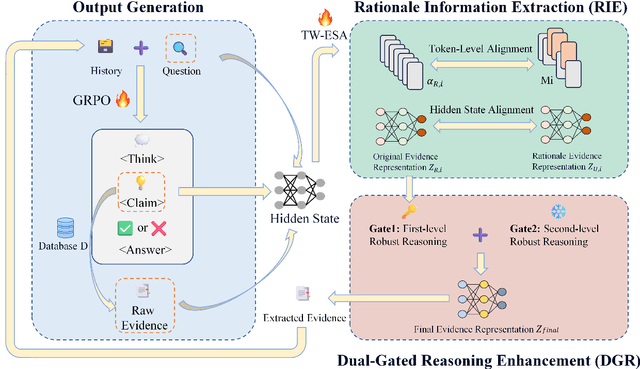
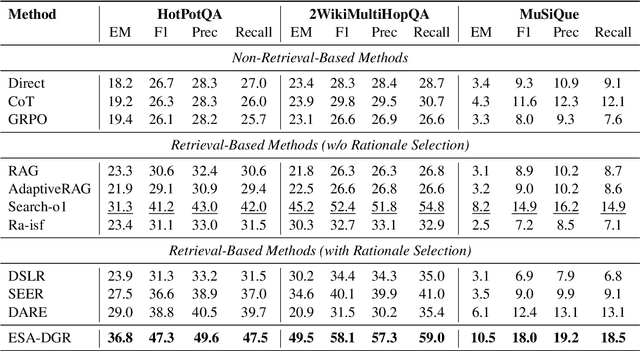
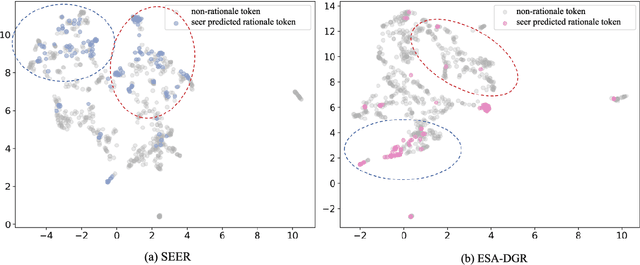
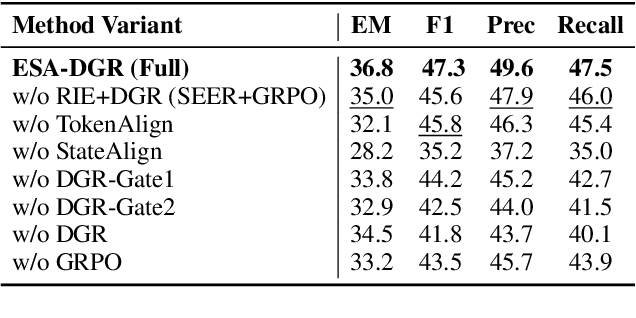
Abstract:Large language models (LLMs) encounter difficulties in knowledge-intensive multi-step reasoning (KIMSR) tasks. One challenge is how to effectively extract and represent rationale evidence. The current methods often extract semantically relevant but logically irrelevant evidence, resulting in flawed reasoning and inaccurate responses. We propose a two-way evidence self-alignment (TW-ESA) module, which utilizes the mutual alignment between strict reasoning and LLM reasoning to enhance its understanding of the causal logic of evidence, thereby addressing the first challenge. Another challenge is how to utilize the rationale evidence and LLM's intrinsic knowledge for accurate reasoning when the evidence contains uncertainty. We propose a dual-gated reasoning enhancement (DGR) module to gradually fuse useful knowledge of LLM within strict reasoning, which can enable the model to perform accurate reasoning by focusing on causal elements in the evidence and exhibit greater robustness. The two modules are collaboratively trained in a unified framework ESA-DGR. Extensive experiments on three diverse and challenging KIMSR datasets reveal that ESA-DGR significantly surpasses state-of-the-art LLM-based fine-tuning methods, with remarkable average improvements of 4% in exact match (EM) and 5% in F1 score. The implementation code is available at https://anonymous.4open.science/r/ESA-DGR-2BF8.
PVUW 2025 Challenge Report: Advances in Pixel-level Understanding of Complex Videos in the Wild
Apr 15, 2025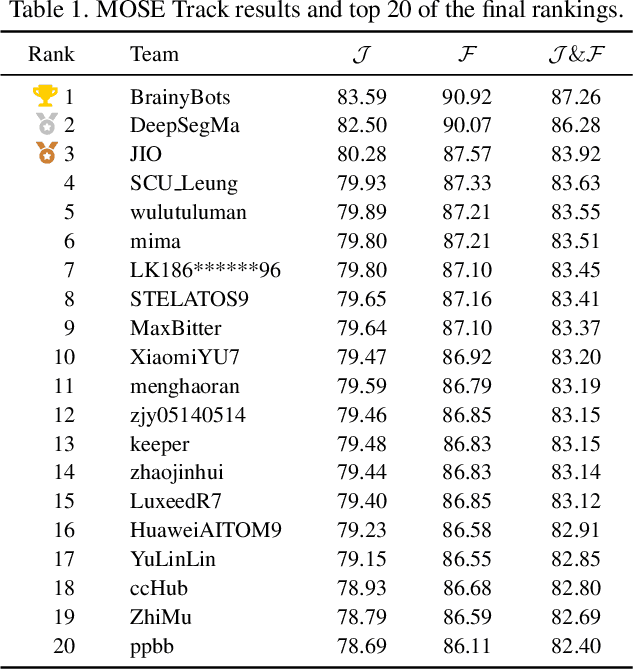
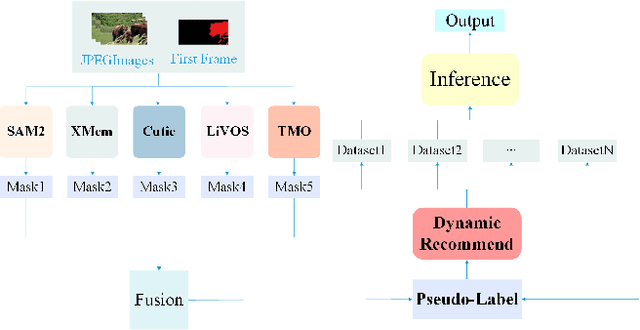
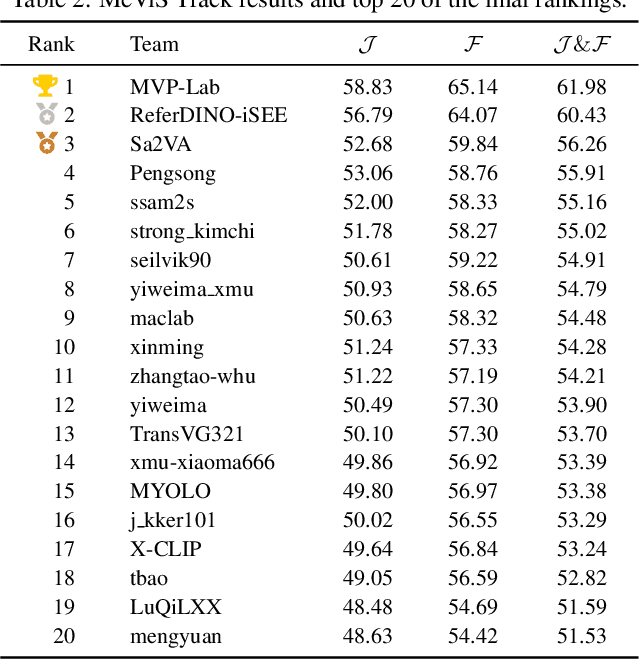
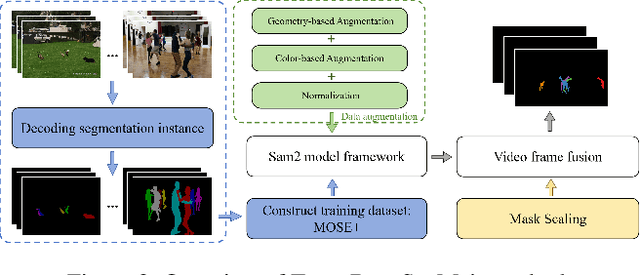
Abstract:This report provides a comprehensive overview of the 4th Pixel-level Video Understanding in the Wild (PVUW) Challenge, held in conjunction with CVPR 2025. It summarizes the challenge outcomes, participating methodologies, and future research directions. The challenge features two tracks: MOSE, which focuses on complex scene video object segmentation, and MeViS, which targets motion-guided, language-based video segmentation. Both tracks introduce new, more challenging datasets designed to better reflect real-world scenarios. Through detailed evaluation and analysis, the challenge offers valuable insights into the current state-of-the-art and emerging trends in complex video segmentation. More information can be found on the workshop website: https://pvuw.github.io/.
Can Competition Enhance the Proficiency of Agents Powered by Large Language Models in the Realm of News-driven Time Series Forecasting?
Apr 14, 2025Abstract:Multi-agents-based news-driven time series forecasting is considered as a potential paradigm shift in the era of large language models (LLMs). The challenge of this task lies in measuring the influences of different news events towards the fluctuations of time series. This requires agents to possess stronger abilities of innovative thinking and the identifying misleading logic. However, the existing multi-agent discussion framework has limited enhancement on time series prediction in terms of optimizing these two capabilities. Inspired by the role of competition in fostering innovation, this study embeds a competition mechanism within the multi-agent discussion to enhance agents' capability of generating innovative thoughts. Furthermore, to bolster the model's proficiency in identifying misleading information, we incorporate a fine-tuned small-scale LLM model within the reflective stage, offering auxiliary decision-making support. Experimental results confirm that the competition can boost agents' capacity for innovative thinking, which can significantly improve the performances of time series prediction. Similar to the findings of social science, the intensity of competition within this framework can influence the performances of agents, providing a new perspective for studying LLMs-based multi-agent systems.
STSeg-Complex Video Object Segmentation: The 1st Solution for 4th PVUW MOSE Challenge
Apr 11, 2025

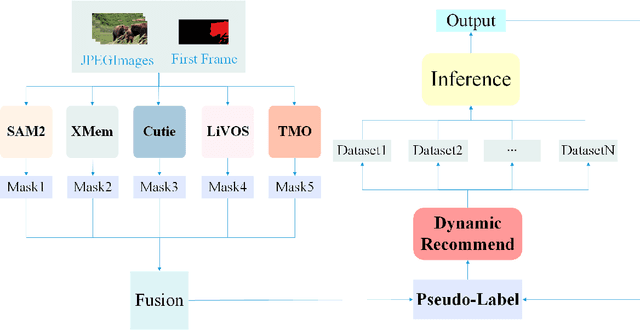

Abstract:Segmentation of video objects in complex scenarios is highly challenging, and the MOSE dataset has significantly contributed to the development of this field. This technical report details the STSeg solution proposed by the "imaplus" team.By finetuning SAM2 and the unsupervised model TMO on the MOSE dataset, the STSeg solution demonstrates remarkable advantages in handling complex object motions and long-video sequences. In the inference phase, an Adaptive Pseudo-labels Guided Model Refinement Pipeline is adopted to intelligently select appropriate models for processing each video. Through finetuning the models and employing the Adaptive Pseudo-labels Guided Model Refinement Pipeline in the inference phase, the STSeg solution achieved a J&F score of 87.26% on the test set of the 2025 4th PVUW Challenge MOSE Track, securing the 1st place and advancing the technology for video object segmentation in complex scenarios.
 Add to Chrome
Add to Chrome Add to Firefox
Add to Firefox Add to Edge
Add to Edge